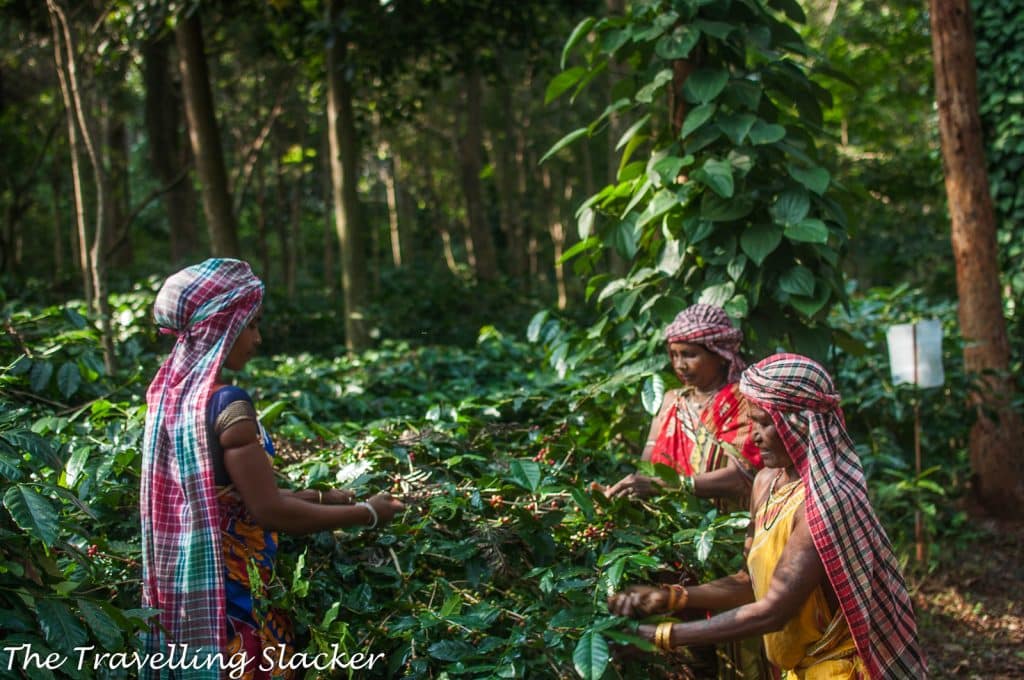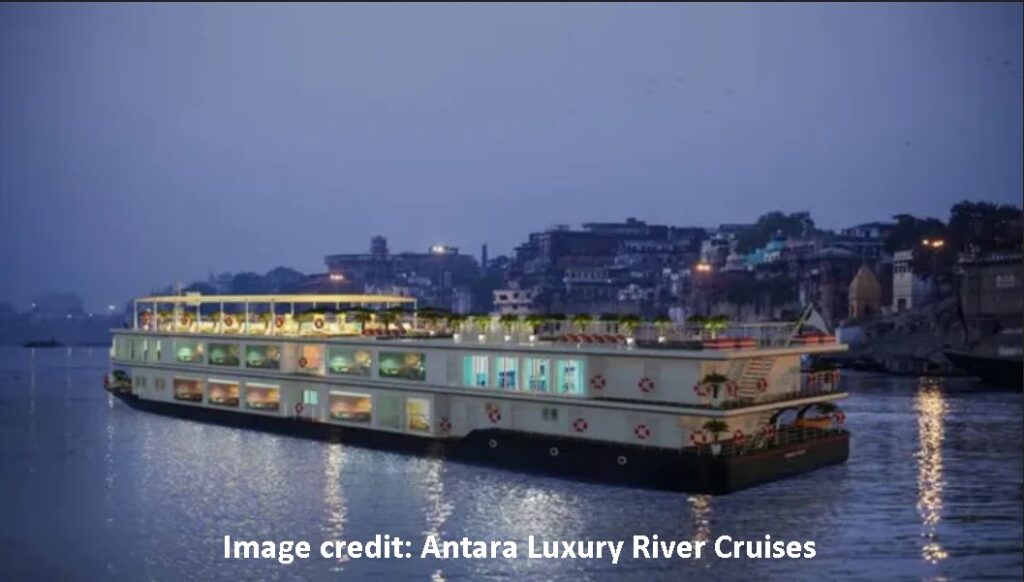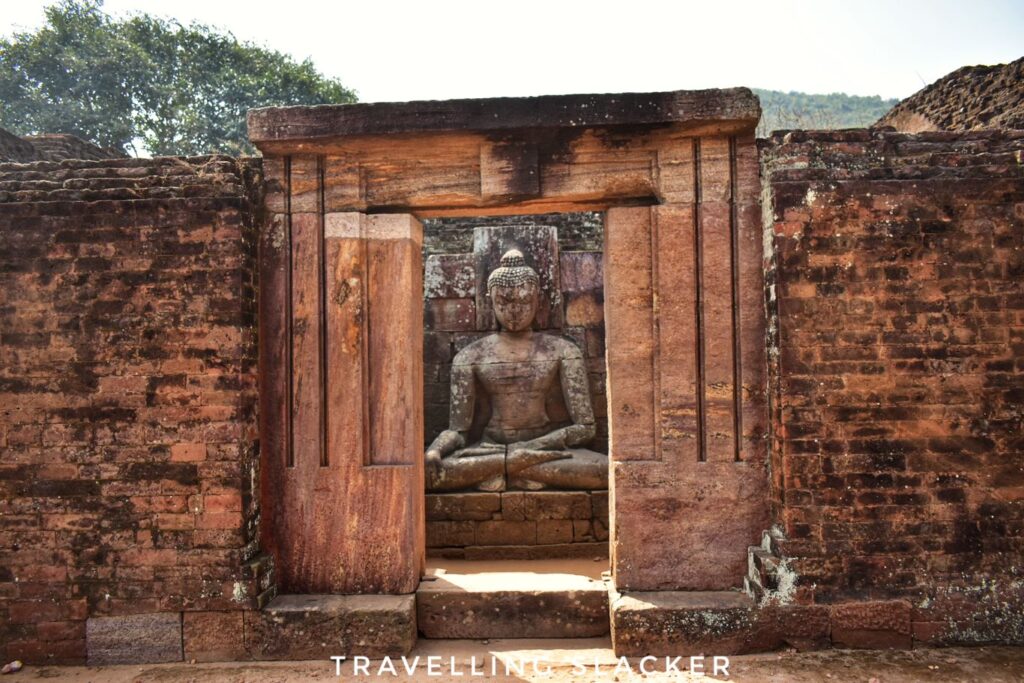So, we moved to Ratnagiri Monastery and other archaeological remains after visiting Udayagiri Monastery, the other major Buddhist archaeological complex while exploring the best of Jajpur Tourism. Unlike the former, Ratnagiri is not very desolate. It is located close to human settlements and it also seemed better maintained than Udayagiri. (This also meant it had entry tickets and stricter rules like no drones… Not that I was carrying it).
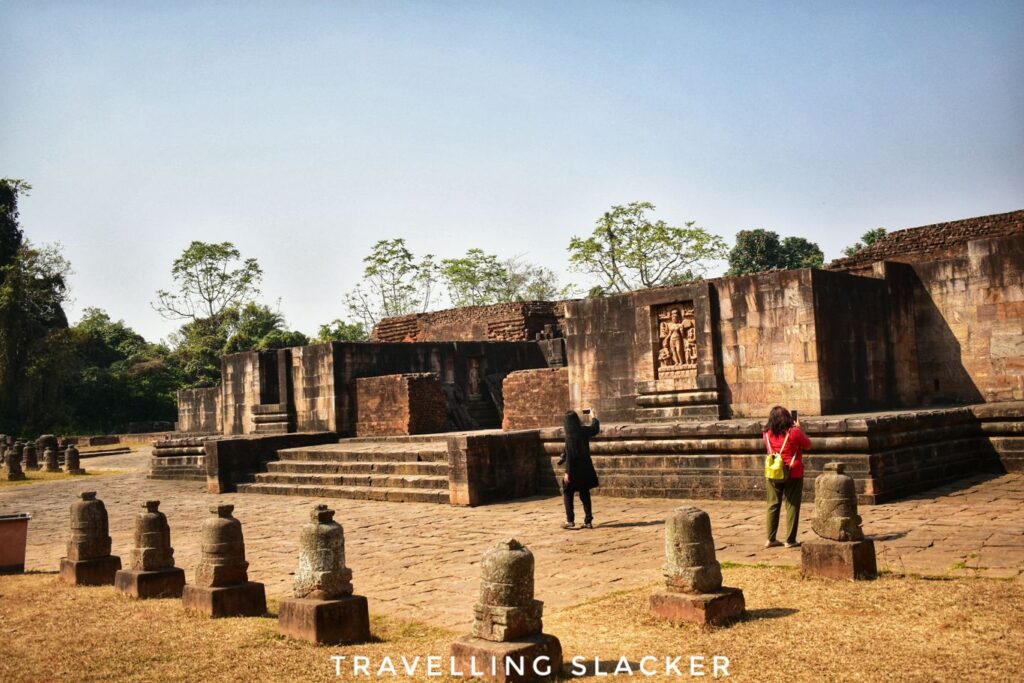
Ratnagiri is also a more compact site with the major structures located adjacent to each other. We climbed the stairs for a while and then suddenly arrived in front of the remains of a giant vihara. Let’s have a look at various aspects of the Ratnagiri Monastery one by one.
Jump to Specific Queries
History and Rediscovery of Ratnagiri Monastery Ruins
The Ratnagiri Buddhist Site including the big Monastery and giant stupa was discovered by archaeologists in the early 20th century although serious excavations took place only in the 1950s. The site is situated in the Ratnagiri hill range, which is a part of the Pushpagiri forest. It is collectively a part of the Diamond Traingle of Odisha, the three major Buddhist archaeological sites along with Udayagiri and Lalitgiri.
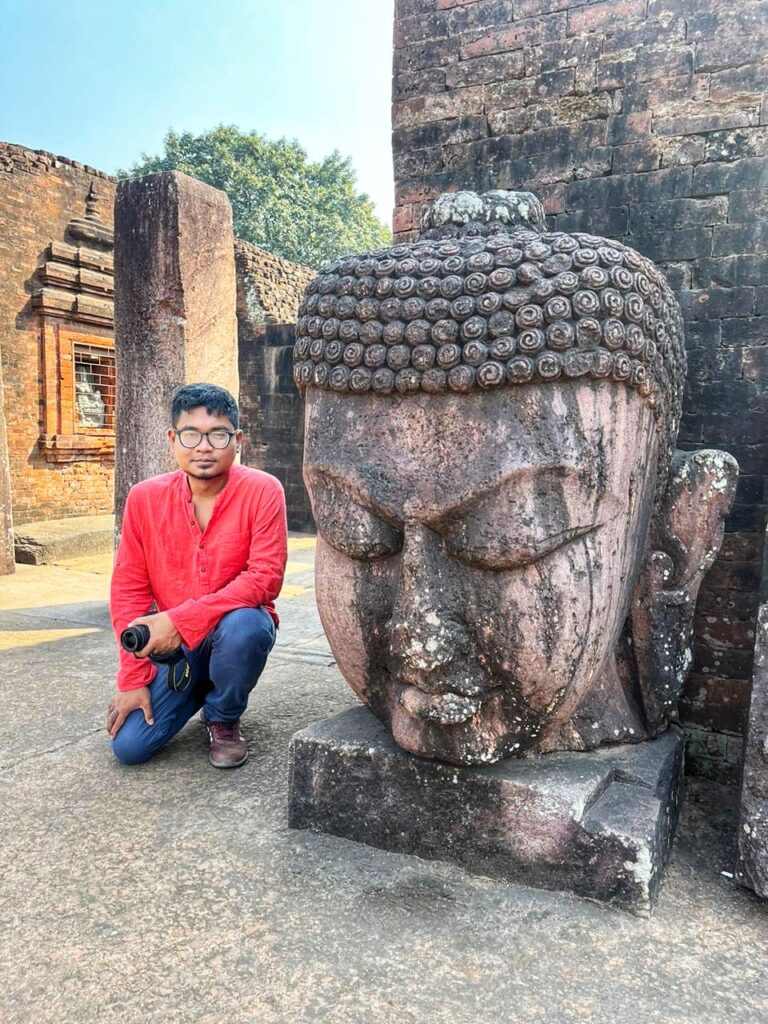
From the sculptural and epigraphic remains it is evidenced that the earliest Buddhist establishment at Ratnagiri was about 5th century AD and continued up to 13th century AD. Thereafter, it gradually lost its importance and deserted after some years. The historicity of Ratnagiri in different sources like historical records, epigraphic or literary evidences including a copper plate charter of Somavamsi king Karna, found from the excavation proved that Ratnagiri was an important religious and philosophical center of yoga and tantric Buddhism (Vajrayana).
Votive Stupa Cluster
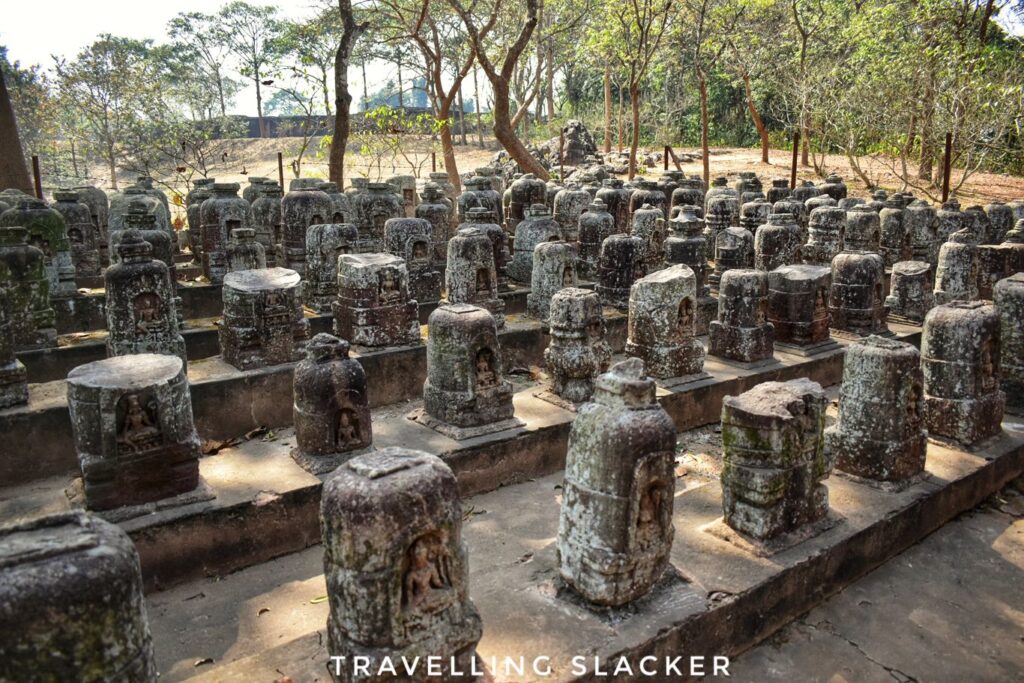
The first thing we saw was a cluster of small votive stupas. While I have seen them in many places, I did some research about their purpose. They apparently originate in the eight cylindrical structures in which the Buddha’s relics were placed after his Mahaparinirvana. The stupa shape is usually associated with the main goal of Buddhism, i.e. release from the cycles of rebirth and suffering.
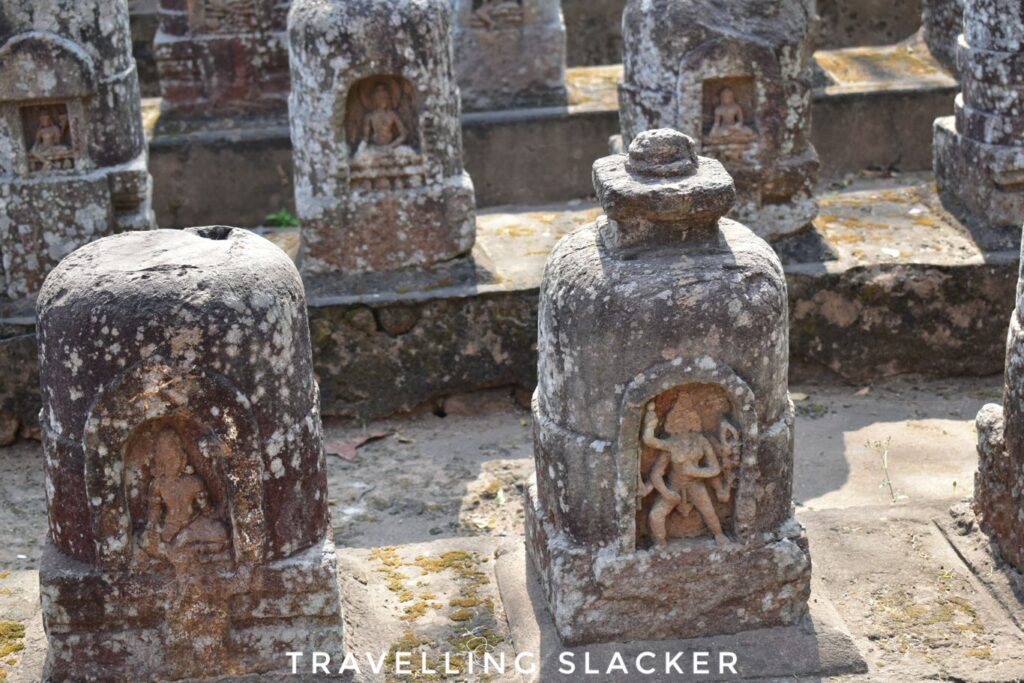
The Maha Stupa
One of the most notable structures at the Ratnagiri is the Maha Stupa or Great Stupa, which is believed to be one of the largest stupa in eastern India. The stupa is said to have been built during the 6th century CE and is believed to have been a center for Buddhist learning and practice. The Great Stupa is mostly in ruins and is surrounded by smaller stupas that can still be seen.
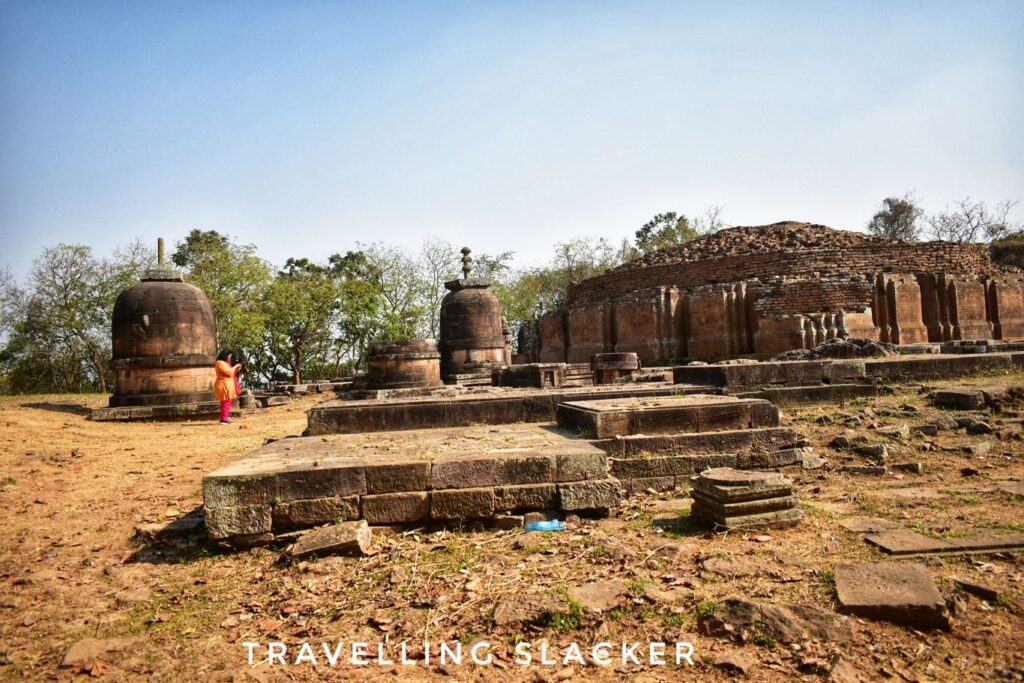
Another notable item here is the barely visible portion of what looks like a giant Buddha state. We almost stepped on it but thankfully we didn’t. Apparently there’s much more to this site which are yet to be excavated. This is probably another giant monastery underneath!
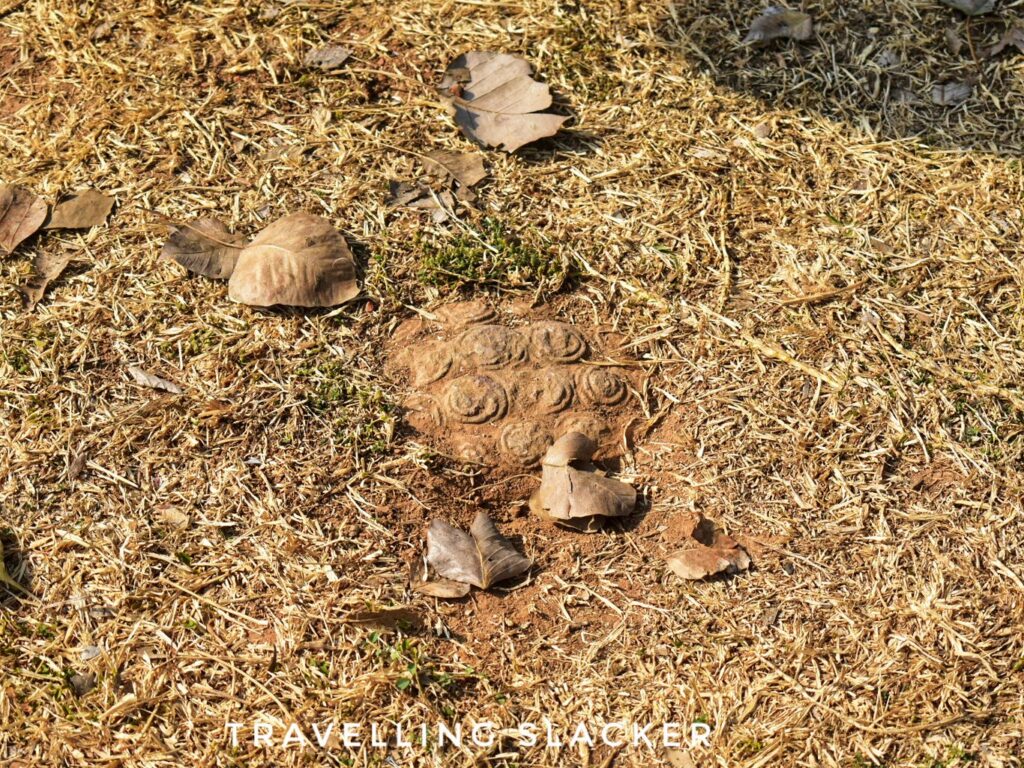
Monastery No. 1
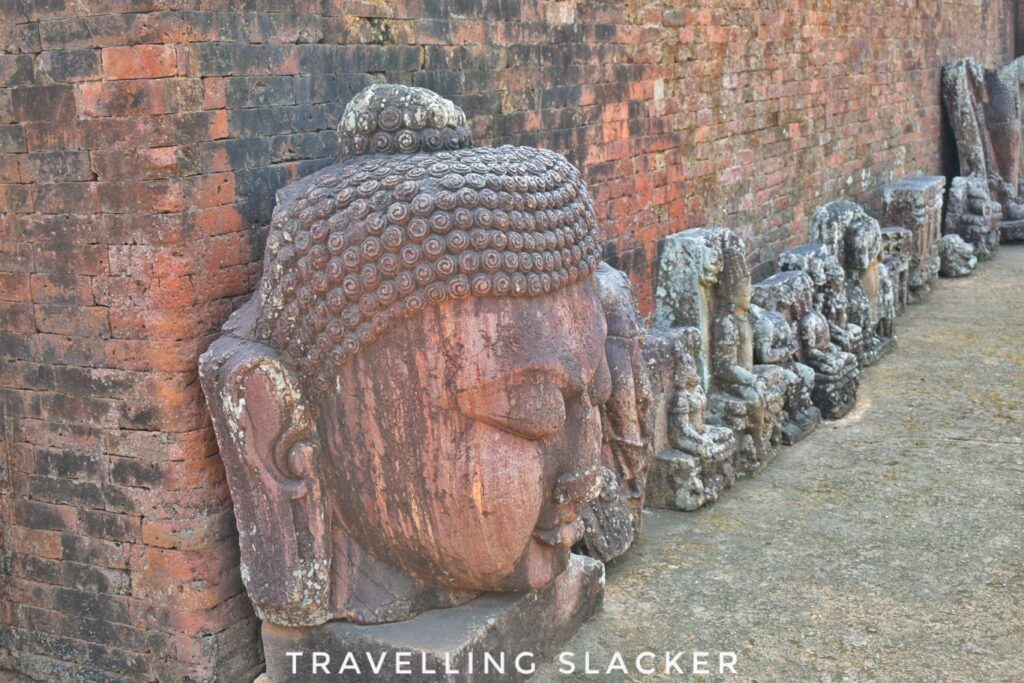
The best preserved structure at Ratnagiri is the Monastery No. 1, which is considered to be the oldest and largest monastery at the site. The monastery has several chambers and is believed to have housed several hundred Buddhist monks at a time. The monastery has several well-preserved sculptures and frescoes that depict the life of the Buddha and other important Buddhist figures.
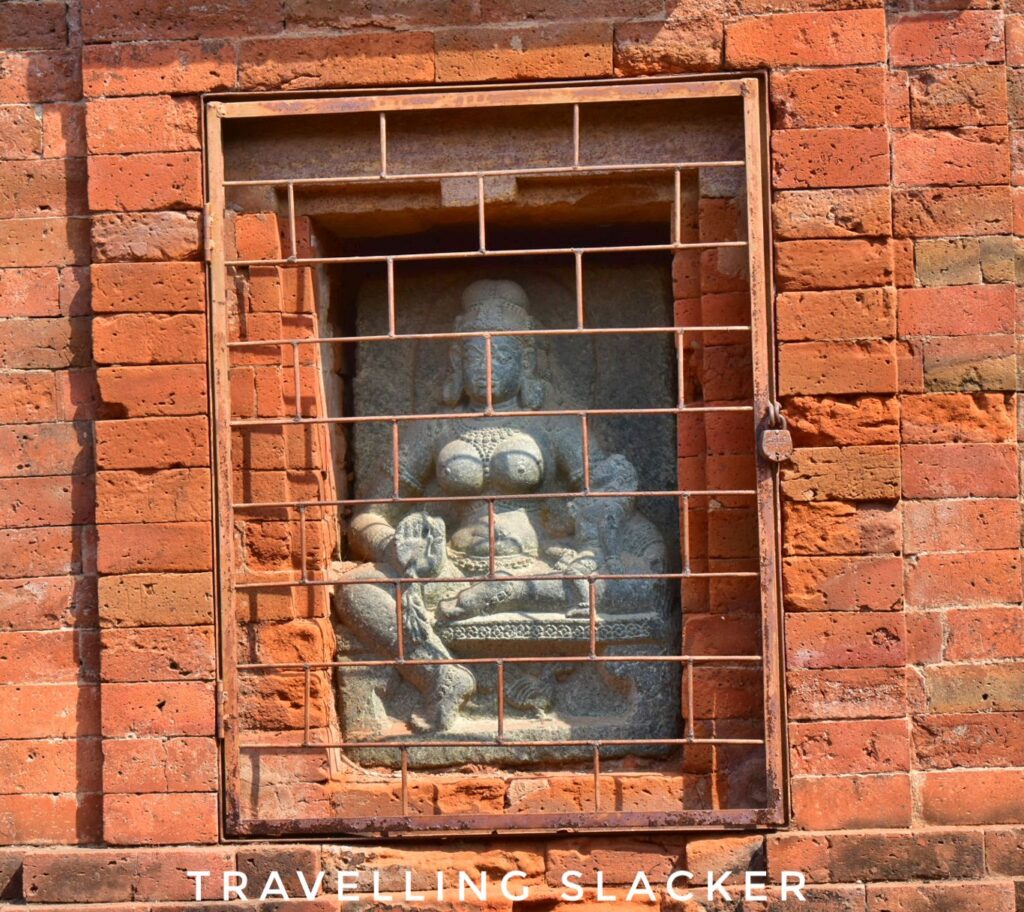
Even the entry gate is one of the most remarkable aspects of the structure. The doorway has a distinct bluish green tinge because it has been made using blue chlorite stone. There are a lot of sculptures on the gate and walls, the most notable one being that of Hariti. She is a deity who was essentially a demoness and after being converted to the Righteous Path by the Buddha himself, eventually became a deity. There are other sculptures of Tara, Manjusri, Aparajita etc along with Avalokitesvara and other Bodhisattvas.
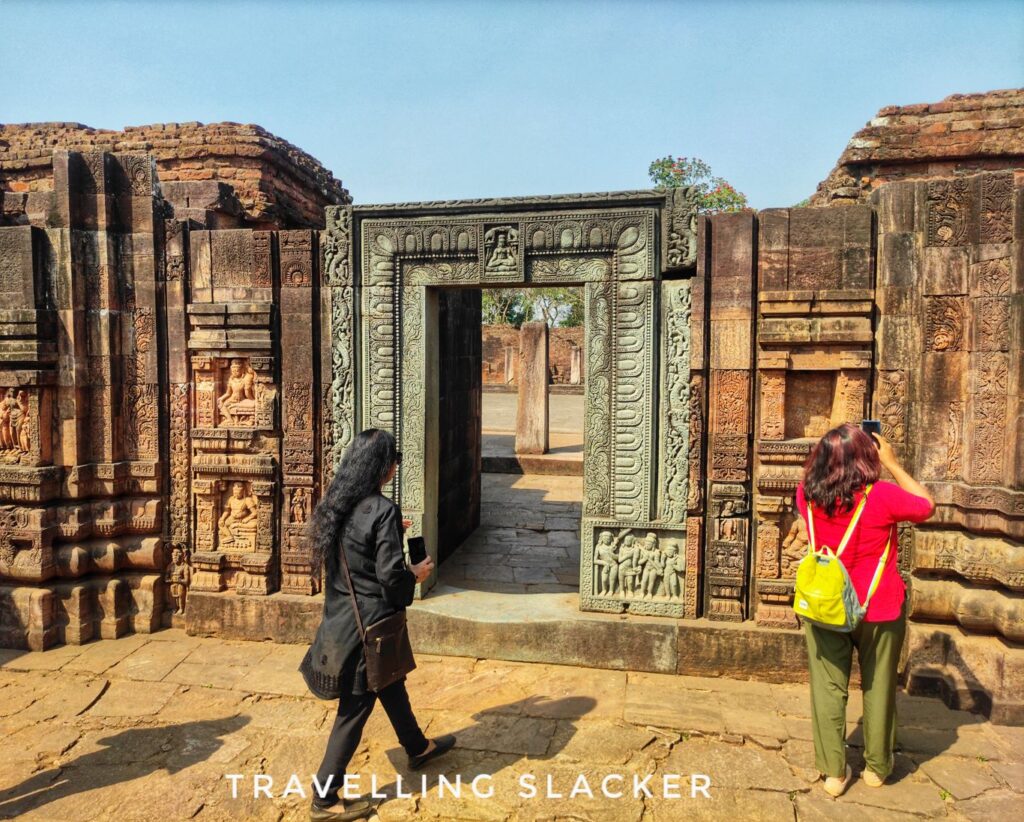
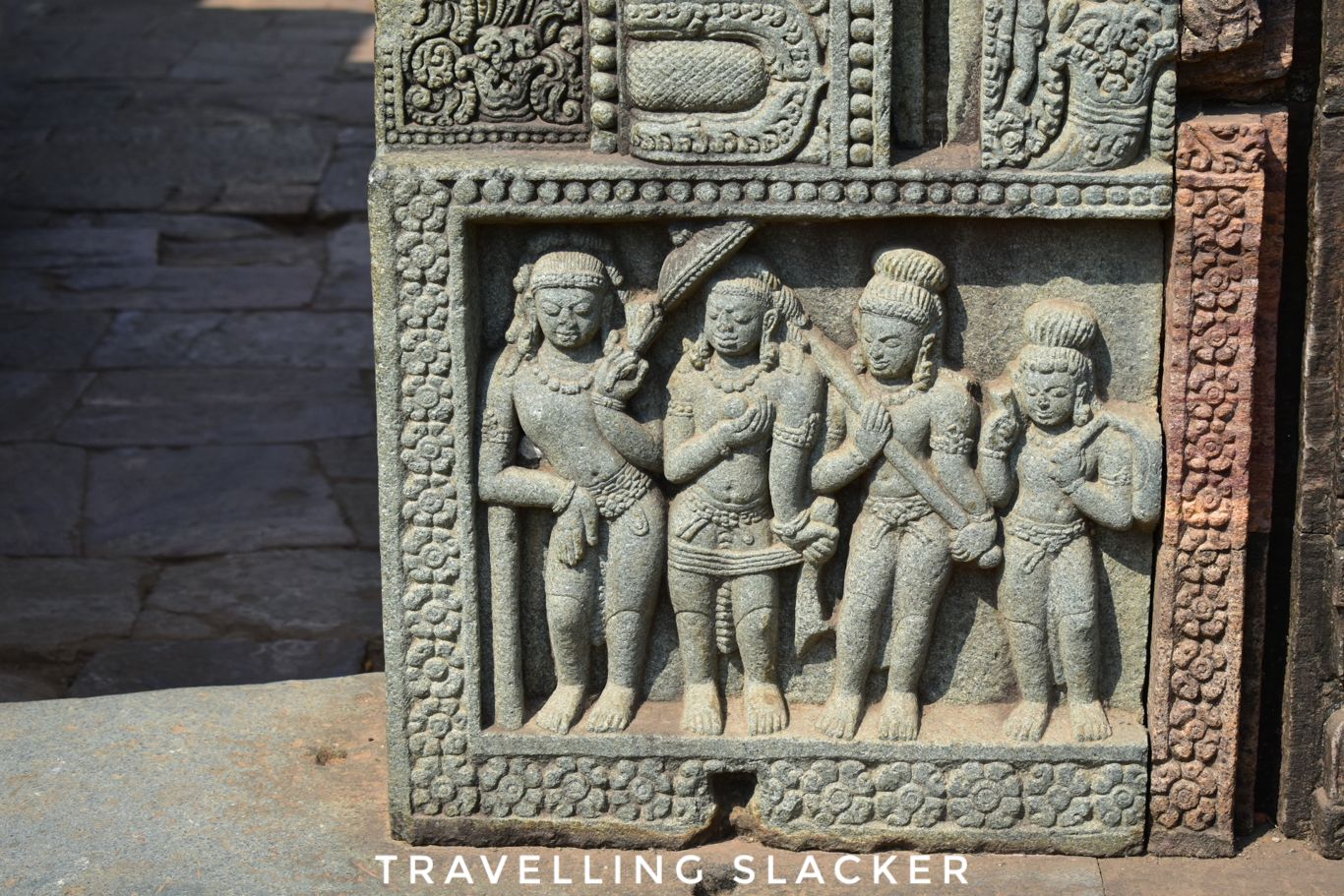
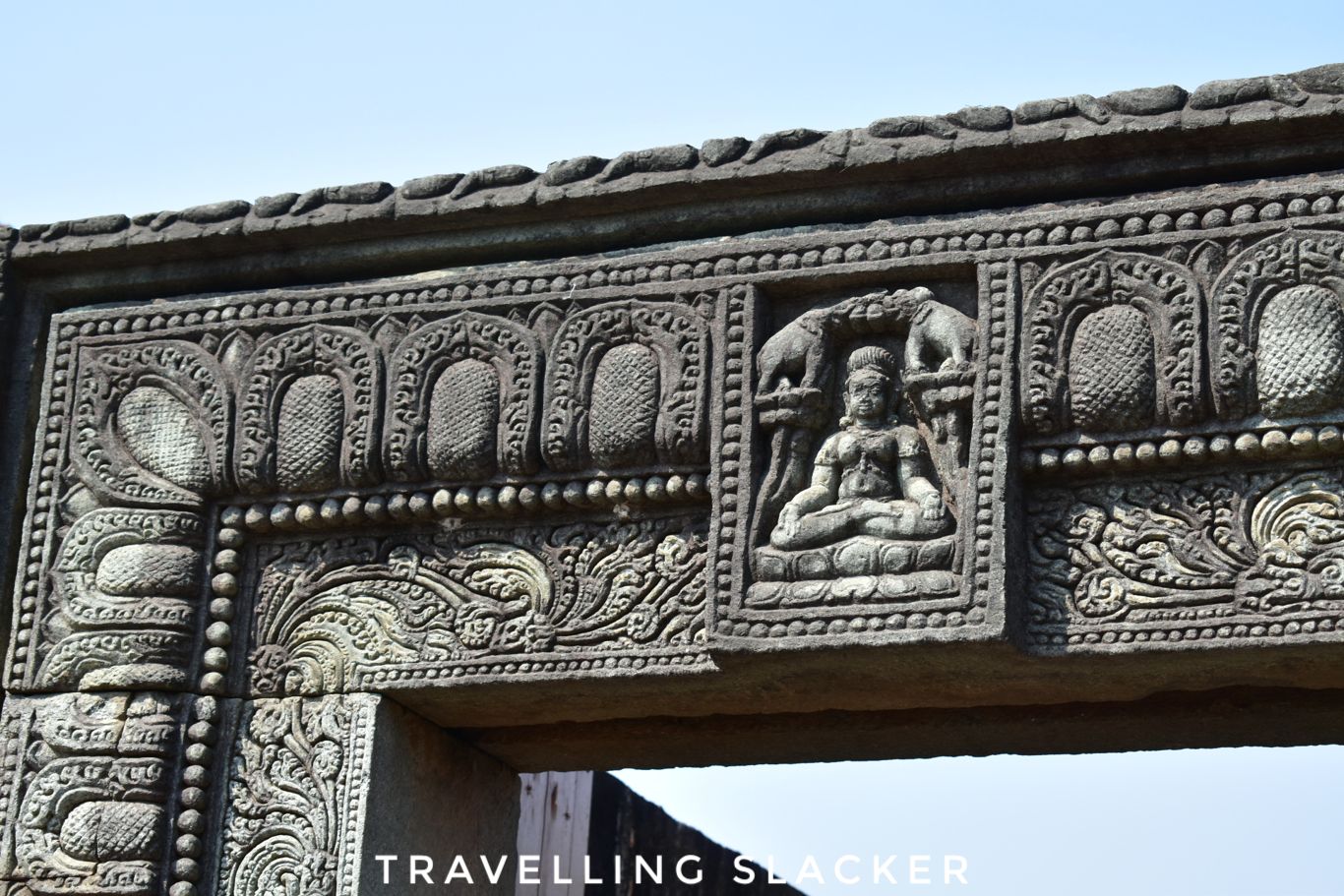
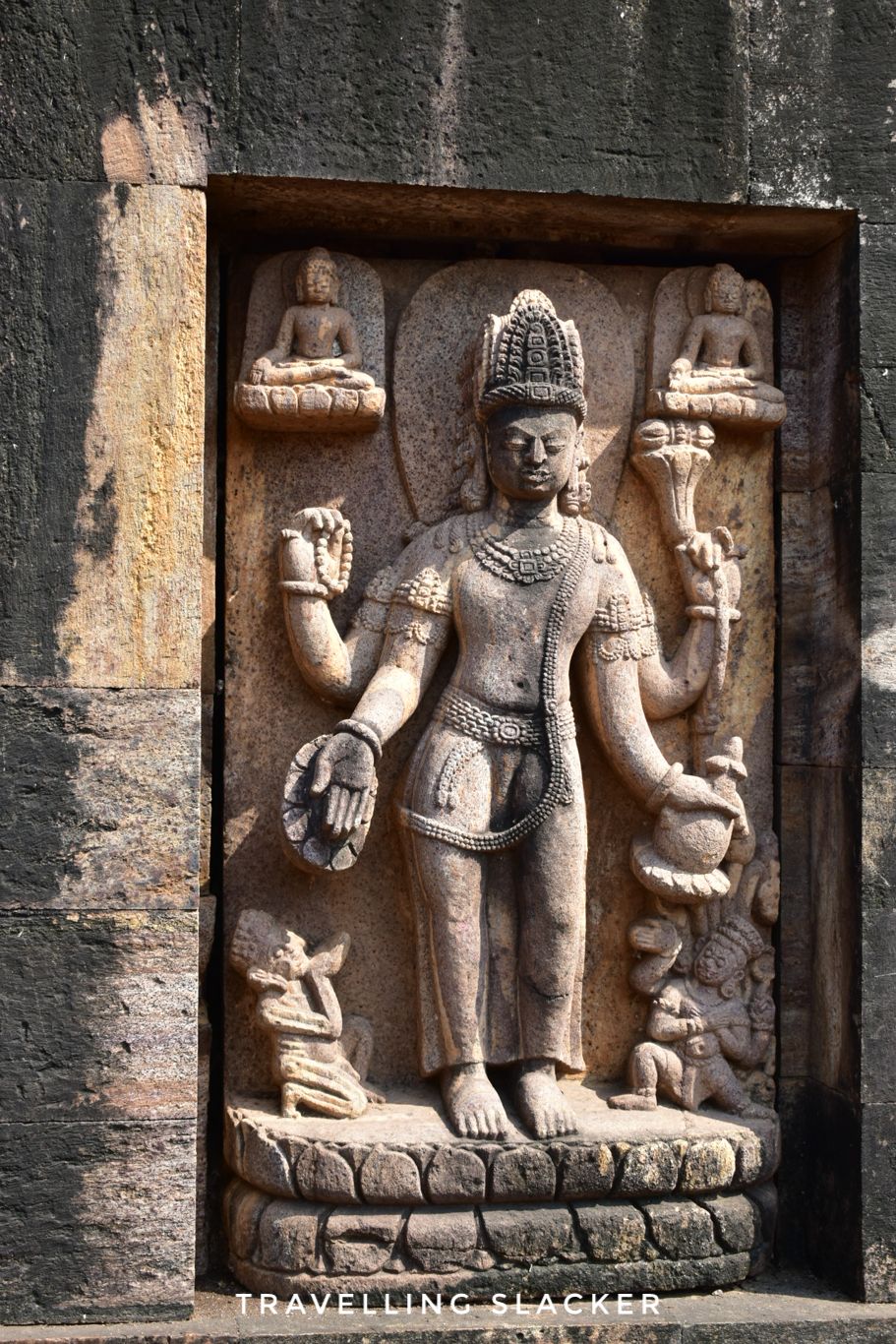
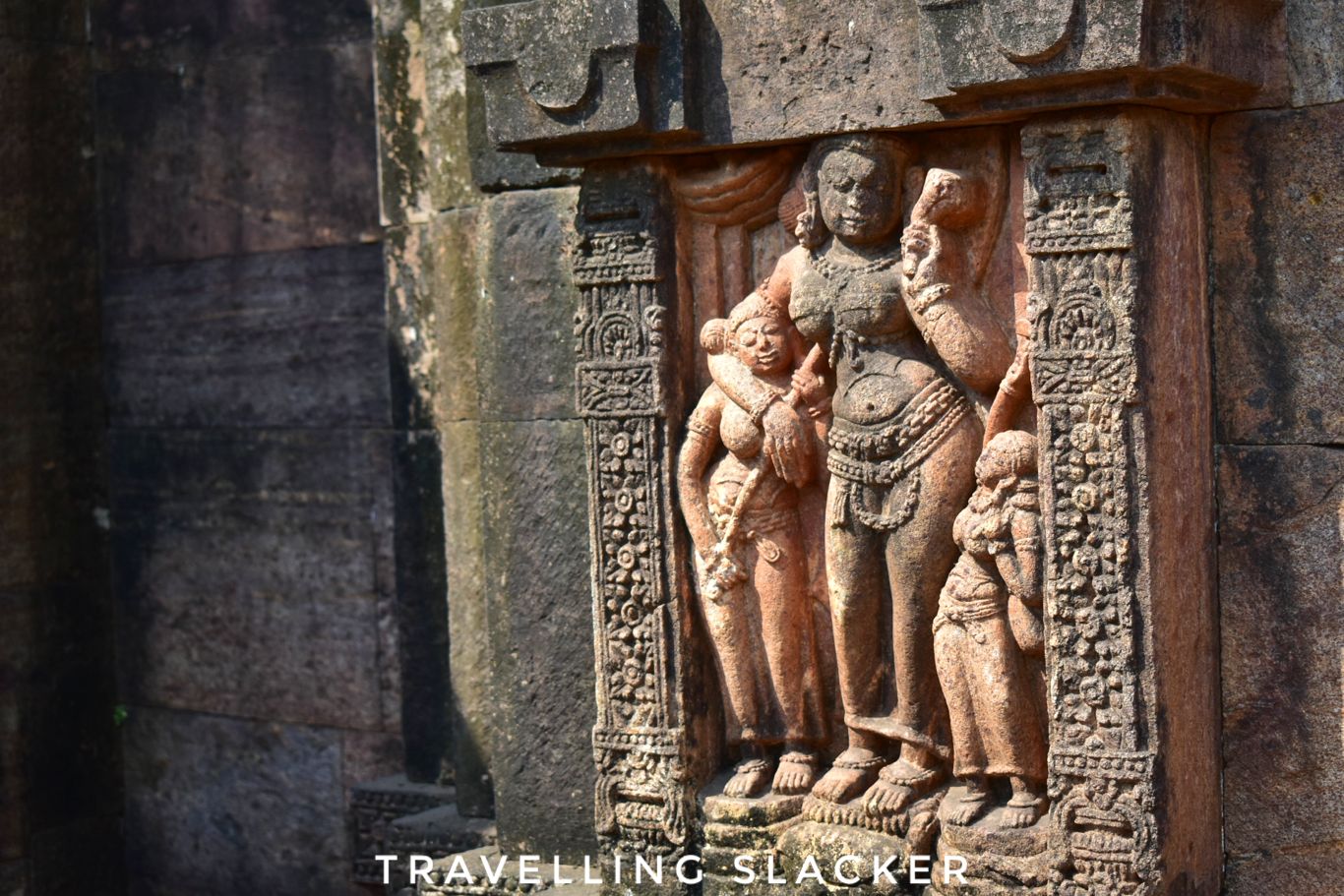
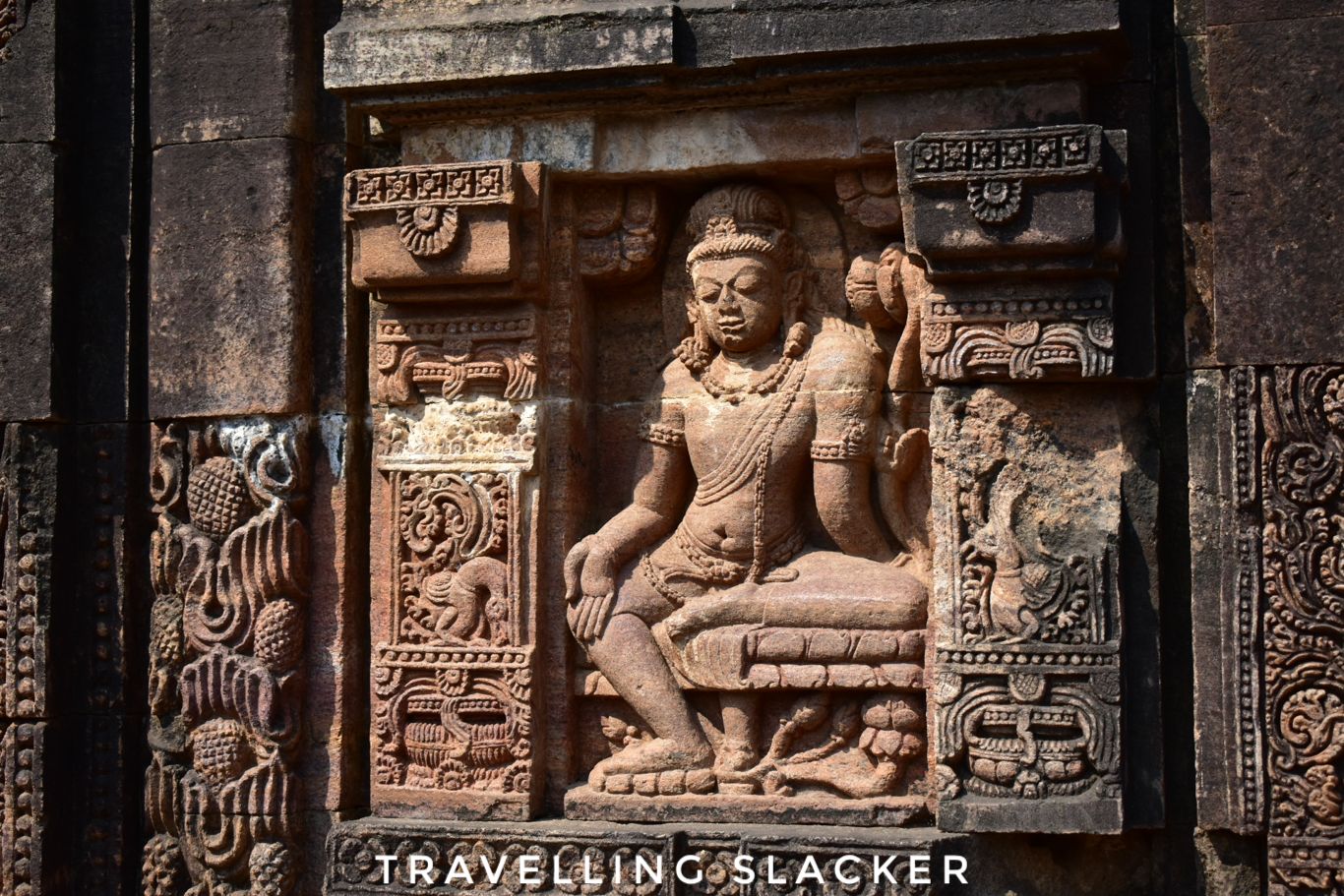
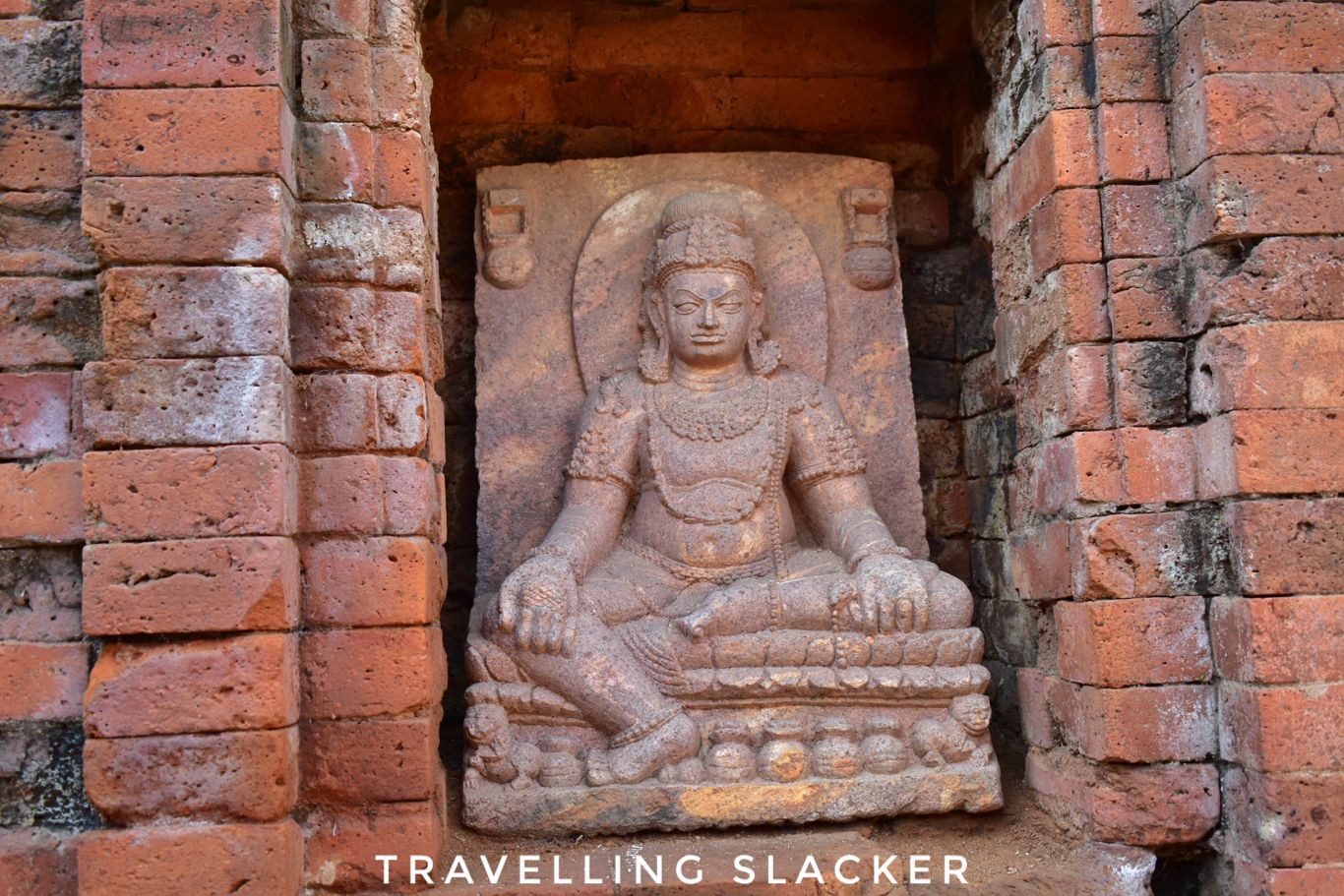
The is a shrine at the back wall of this compound where you can still see a larger than life Buddha statue almost intact, along with a lot of other sculptures. Altos noteworthy are the giant Buddha heads that are probably the most photographed item in this site.
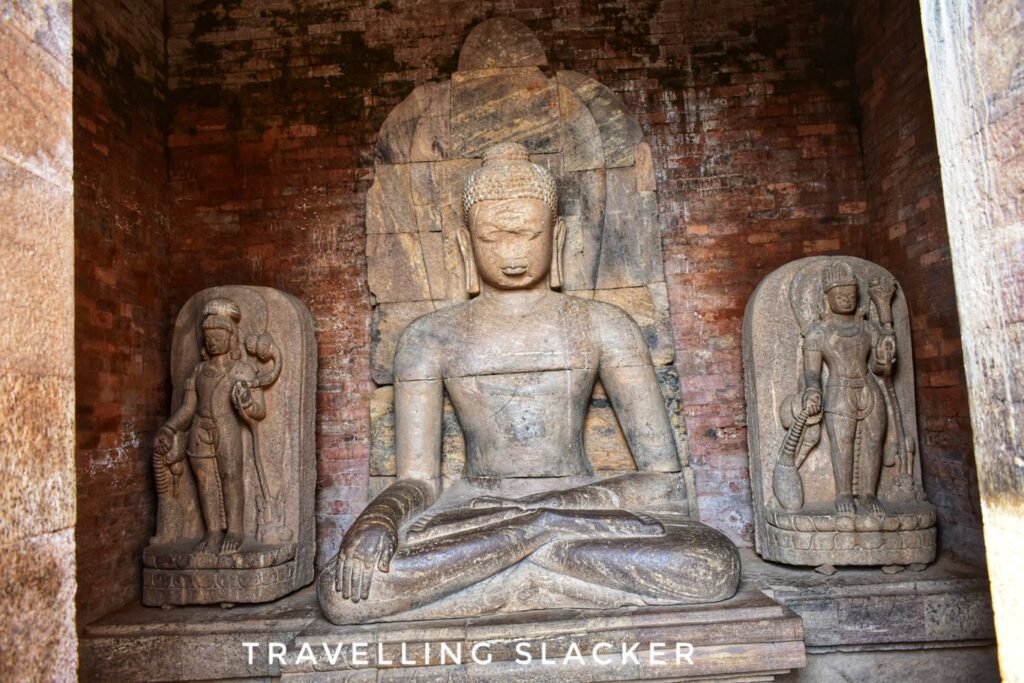
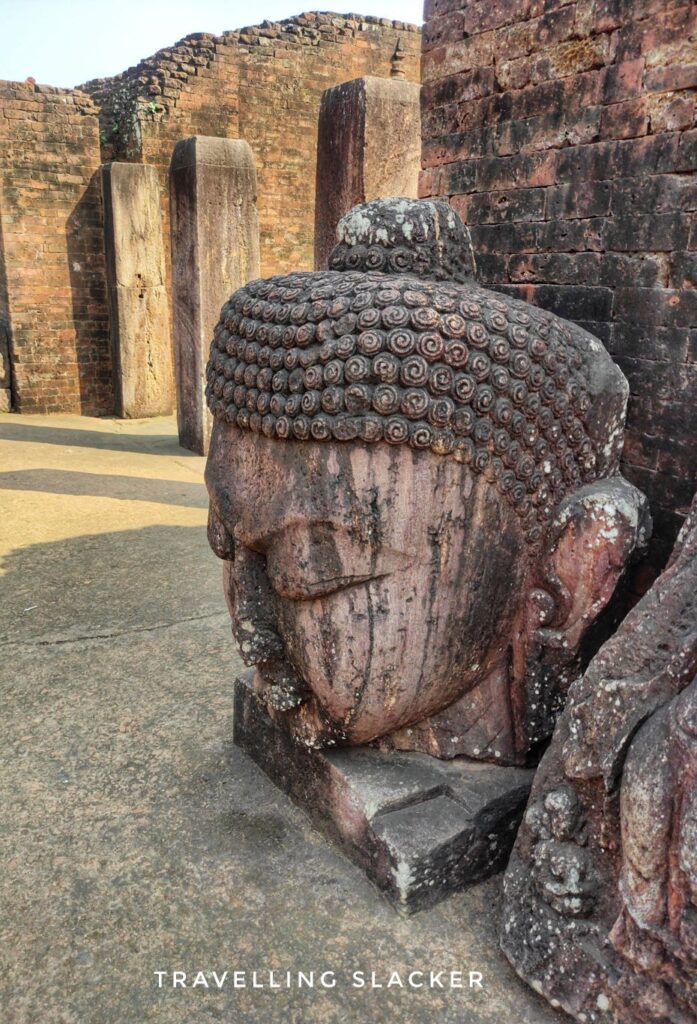
Monastery No. 2 and Other Structures
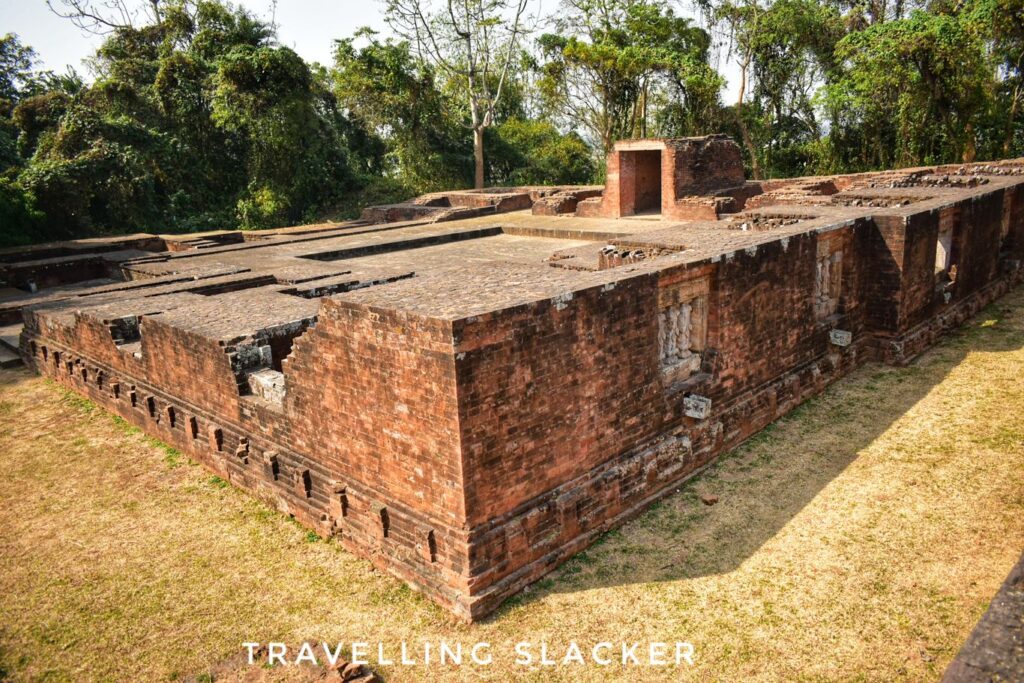
Monastery 2 is located adjacent to the Monastery 1. It’s somewhat smaller and less adorned compared to the other one. The best way to get a clearer view of this structure is to climb the stairs of Monastery 1.
Mahakal Temple
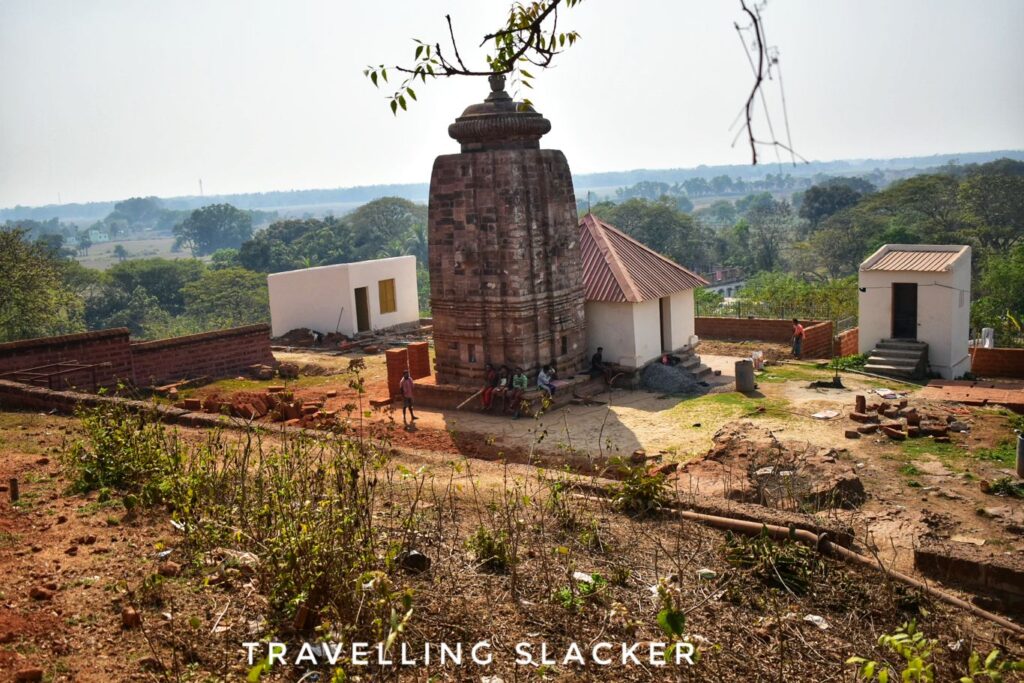
Just beyond the big stupa, there is a big medieval Shiva Temple. It is a comparatively newer structure built around 15th century after the decline of this site and Buddhism in general. I was somewhat alarmed by the indiscriminate painting and restoration work here that seems to have affected the original look of the temple.
The Ratnagiri Archeological Museum
The museum here stores a lot of artifacts found during the excavations. However, it was unfortunately closed when we visited it. Nevertheless, do visit it if you get a chance. There’s even a website for the museum… Here’s what I could find out from there…
“It has 3485 listed antiquities of which 238 are displayed in the museum galleries, corridor, back side verandah and in the front entrance of the museum. The museum consists of four big galleries with a long stepped corridor displayed with various antiquities mainly related to tantric Buddhism. These are varied in nature and include small votive stupas, sculptures of different medium and dimensions in stone, bronze, ivory, copper and stone inscriptions, inscribed pot sherds, terracotta seals and sealings etc.
In gallery-1 the number of displayed antiquities are 25, amongst them mention may be made of stone images of Buddha, Avalokitesvara, Khasarpana, Manjusri, Tara-all belonging to 9th to 11th century AD. The gallery-2 includes sculptures of Buddha, Bodhisattvas, Jambhala, Tara in various postures, Vasudhara, Chunda and others. In gallery-3 as many as 81 antiquities are displayed in the wall show cases and the important are stupas depicting Buddha, Bodhisattvas, Aparajita, Ushnishavijaya. The number of displayed antiquities of gallery-4 is 80. The important displays of this gallery are inscribed pot-sherds, terracotta plaque depicting Buddha, monastic seal, copper plates and bronze images of Buddha, Krishna-Yamari, Tara and Manjusri.
There’s also a reserve collection consists of antiquities which include stone sculptural pieces, monolithic votive stupas, terracotta seals and sealings, bronze objects, glass bangles, all are found from the excavations of the site. The entrance gate is adorned with large sculptures of Avalokitesvara and Ashtamahabhaya-Tara.”
—–
The Ratnagiri Buddhist site is not only significant for its ancient structures but also for its role in the spread of Buddhism in ancient India. The site is believed to have been a major center for Buddhist learning and practice, and several important Buddhist scholars and monks are said to have visited the site. The site is also believed to have been an important center for the transmission of Buddhist art and architecture, which influenced the development of Buddhist art and architecture in other parts of India and Asia.
You can also take a video tour of the site through my footages
Ratnagiri Monastery Travel Guide
How to reach Ratangiri Monastery?
Ratnagiri Monastery is 29 KMs from Jajpur town and 79 KMs from Bhubaneswar, which is the main airport and railhead. Unlike Udayagiri, it’s an inhabited area, and you should find local transport too. However, these three major sites are usually visited together and so, it’s better to have a vehicle at your disposal.
Ratnagiri Monastery Ticket Prices
Do note that tickets are different for Ratnagiri Buddhist Site and Ratnagiri Archaeological Museum.
Ticket for Ratnagiri Buddhist Site is INR 25 ($0.30) for Indian visitors as well as for people from SAARC and BIMSTEC countries but it is INR 300 ($3.6) for all other nationalities.
There is also an additional camera fee of INR 25.
Entry is free for children below 15 years.
Ticket for Ratnagiri Archaeological Museum is only INR 5 for everyone.

